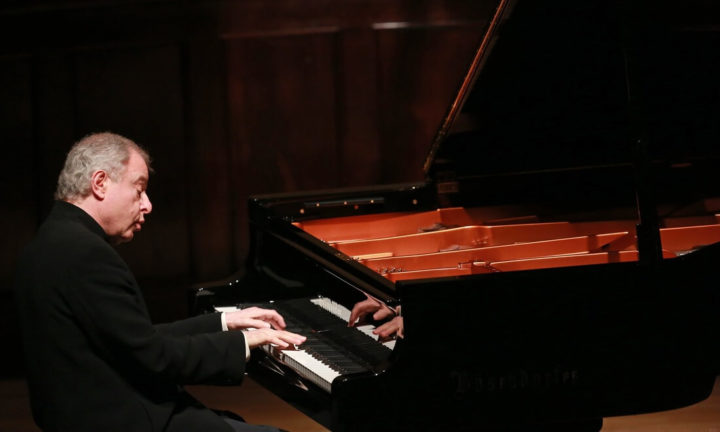Excerpt from The Guardian, April 7, 2016...by Andrew Clements
Along with Bach, the first Viennese school – Haydn, Mozart, Beethoven and Schubert – has always been at the centre of András Schiff’s musical universe. He goes back to that music regularly in his recitals but, never content to retread the same ground, he manages to find new approaches, new things to discover about such inexhaustible masterpieces.
His latest three Wigmore Hall recitals are devoted to the last three piano sonatas by each of the four composers. The central panel of this triptych began with Mozart’s B flat Sonata, K570, and went, via Beethoven’s Op 110 and Haydn’s Sonata in D HXVI:51, to Schubert’s A major Sonata, D959. The whole extraordinary span of music was delivered without an interval, indeed, without the pianist even leaving the platform between works, so careful was he not to break the intense spell his playing created.

András Schiff

In recent Wigmore recitals, Schiff has explored the sound worlds of different pianos, playing Schubert on a beautifully restored Brodmann fortepiano from the 1820s, and Beethoven on a 1921 Bechstein that once belonged to the great Wilhelm Backhaus. This time, though he opted for a brand-new instrument, the latest concert grand from Bösendorfer – a Viennese-made piano for music composed in Vienna. The company could hardly have hoped for a better demonstration of what their latest creation can do – the range of colours Schiff conjured from the instrument was astounding, while its particularly rich, fathomless lower register seemed perfectly matched to his effortlessly eloquent left hand.
As always with such a thoughtful, inquiring pianist, not every interpretative idea was totally convincing. The Haydn and Mozart were immaculate performances, played with consummate musicality, using a palette of wonderfully translucent colours; the Beethoven was simply immense, with its first movement given a sense of unease by the edgy insistence of the left hand, and the final fugue built to a climax of huge power and glorious radiance. But a few things about the Schubert sonata puzzled – an overfussy treatment of the wispy scherzo, for instance, but most of all a curious feeling of immobility in the first movement, transforming what should be urgent into musical marble, very beautiful but static. A special recital, nevertheless.


